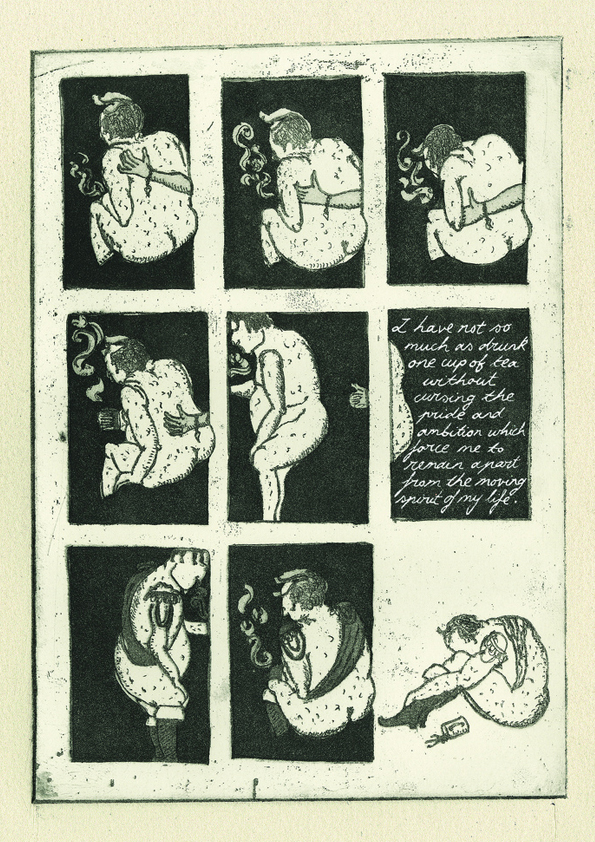Factual Illustration: What, Why and How?
There's more to it than just drawing stuff. Multi-disciplined illustrator: Different clients, education work workshops, lectures
Factual Illustrations
Factual illustration requires a lot of disciplne, but there isn't as much competition as in other fields. Illustration is used in all sorts of places:
Newspapers, Magazines: The client wants something that has a style, but still has to be recognizable. Illustrations are not always purely factual, can combine factual and artistic elements. "the mind unshacked, new scientists"
Design and Products: Illustration for packaging, advertising. Some are factual (draw what the product looks like), some are not (coke, cereal, selling an idea of what you can be when you buy the products)
Fashion illustration: Even though fashion illustration is often quite abstract and fantastical, fashion illustrators often have a strong understanding of anatomy, good life drawing skills

Illustration as a tool to explain step-by-step processes Illustration is universally understood, you don't need to speak a certain language in order to follow drawn instructions. The Lego instruction manual is a good example for this and is probably a big reason behin Lego's worldwide success.
Science and Medicine Science wouldn't have been able to advance the way it did without detailed scientific illustrations. Medical illustrations are still important for education: Photograph of an open body can be very messy (fat, surgical tools, blood), illustration can cut all of that out and focus on what's important
Illustration as a tool to persuade and convince us of stuff Political propaganda posters, government leaflets Not always for good reasons, and not always in a way that tells the truth
How I got into the illustration business
- No formal art education
- Worked at Brixton prison as a social worker
- Kids who came to visit their dads struggled to communicate with the, so I started a drawing course
- Comics in particular helped kids tell their story (Workshops like this are still part of my practice today)
- Had no money to go back to university, so just started a sketchbook, spent hours drawing every day
- Went around with drawings of animal heads to fabric manufacturers
- Met someone from John Lewis, created a range of pillows
- Had to rely on luck less, started to enter contests and awards
- Got second place in Cheltenham Illustration Awards 2011, met Saun Tan

- Second Break: Comics
- Got "Best of Young British Comic Artists" 6 month scholarship
- Result was a graphic novel called "Love and Lament"
- Did work for cooking books
- Got to do historical work for publishers and museums (they generally like if you reach out to them and show them work)
Medical Illustration
Medical illustration has been around for a long time combination of science and art, allows you to work with scientists versalius - disected brains of criminals da vinci anatomy sketchbooks (wellcome collection) by making illustrations, he's trying to understand more about anatomy gray's anatomy 100 years of biomedicine, had to draw 100 objects that changed medicine
Medical Art education trust (MAET)
Long, formal training process to get into medical illustration (if your stuff is used to teach medical students you can't make mistakes) attend disections, do disections, shadow doctors in hospital, surgical an pathological studies
Medical illustrators do all sorts of stuff, like Illustrations for textbooks, models for teaching
5 things you shouldn't do as an Illustrator
- Steal - be inspired by yes, copy nope
- Name your files something like fuck_you_stupid_client-2-copy.psd
- Loose receipts for material, you need them to claim expenses, bill your clients later
- Start work without being clear on fee, time period and copyright
- Lie to people about how close you are to finishing work
5 things you should do
- Believe in yourself and your style
- Be good at admin: emails, accounts, receipts, tax stuff
- Keep a personal sketchbook on the side
- If you can, do a bit more than a client is expecting, its gonna get you hired again
- Be kind to other illustrators, refer jobs you can't do to them. It will come back to you at some point
Questions
Do you get mad from all the tiny hatching?
I did get RSI from one of my projecs. You need to have a good setup, have a decent desk, good chair, lighting and stuff so you dont get RSI, also don't take on jobs that are gonna drive you insane.
How long is the course at MAET?
You can take up to 6 years, most people do it in 2-3 years. You have to learn the anatomy of the body the same way a medical student would, which takes a long time
How do you go about maintaing a network with other illustrators?
- I didn't go to art school, so I didn't have those connections starting my career.
- Basically I just emailed illustrators that I liked and asked them for tips, usually people were happy to help.
- Every time I work with someone I keep their email and keep in touch with the, after the project
- When you refer someone a job, they will get back to you at some point